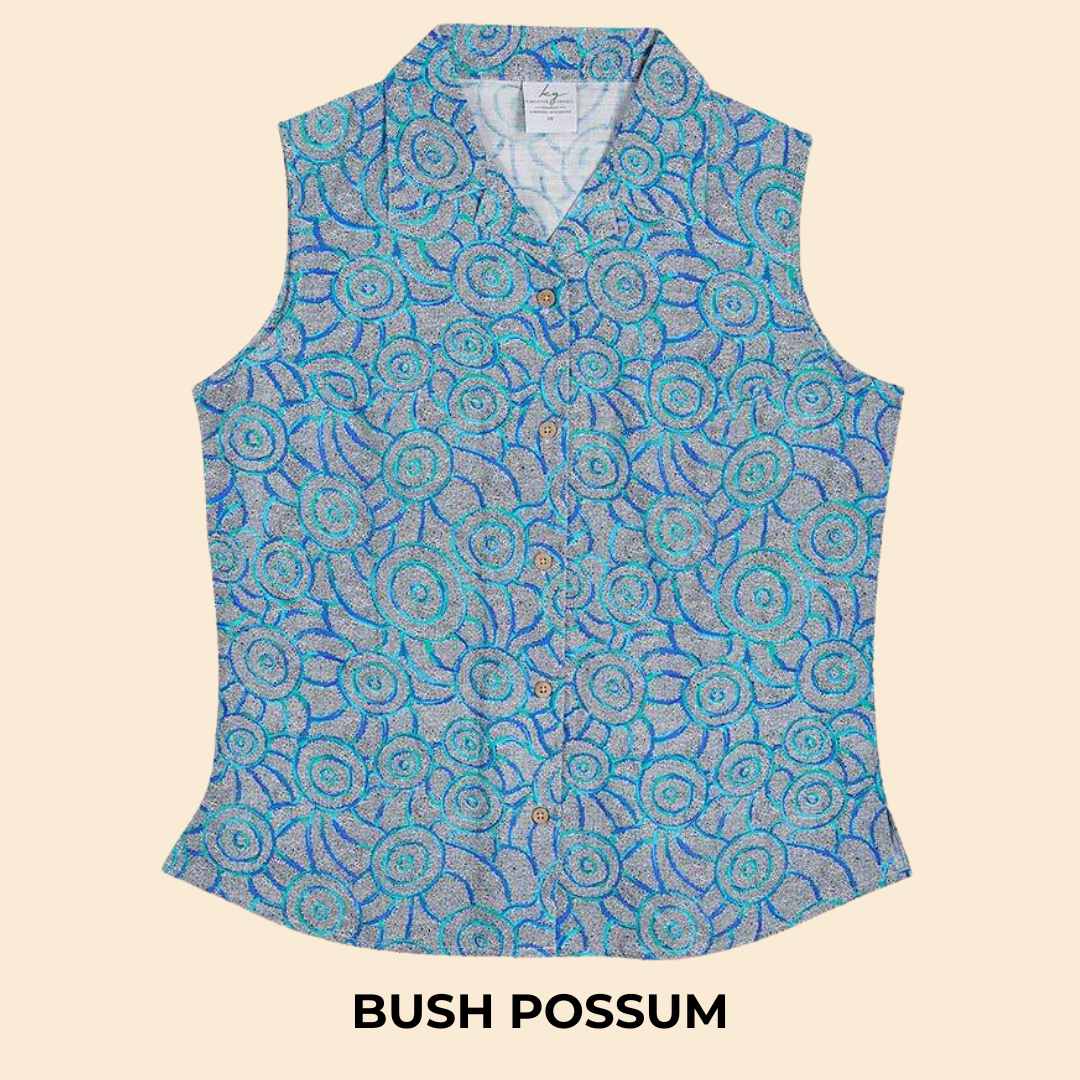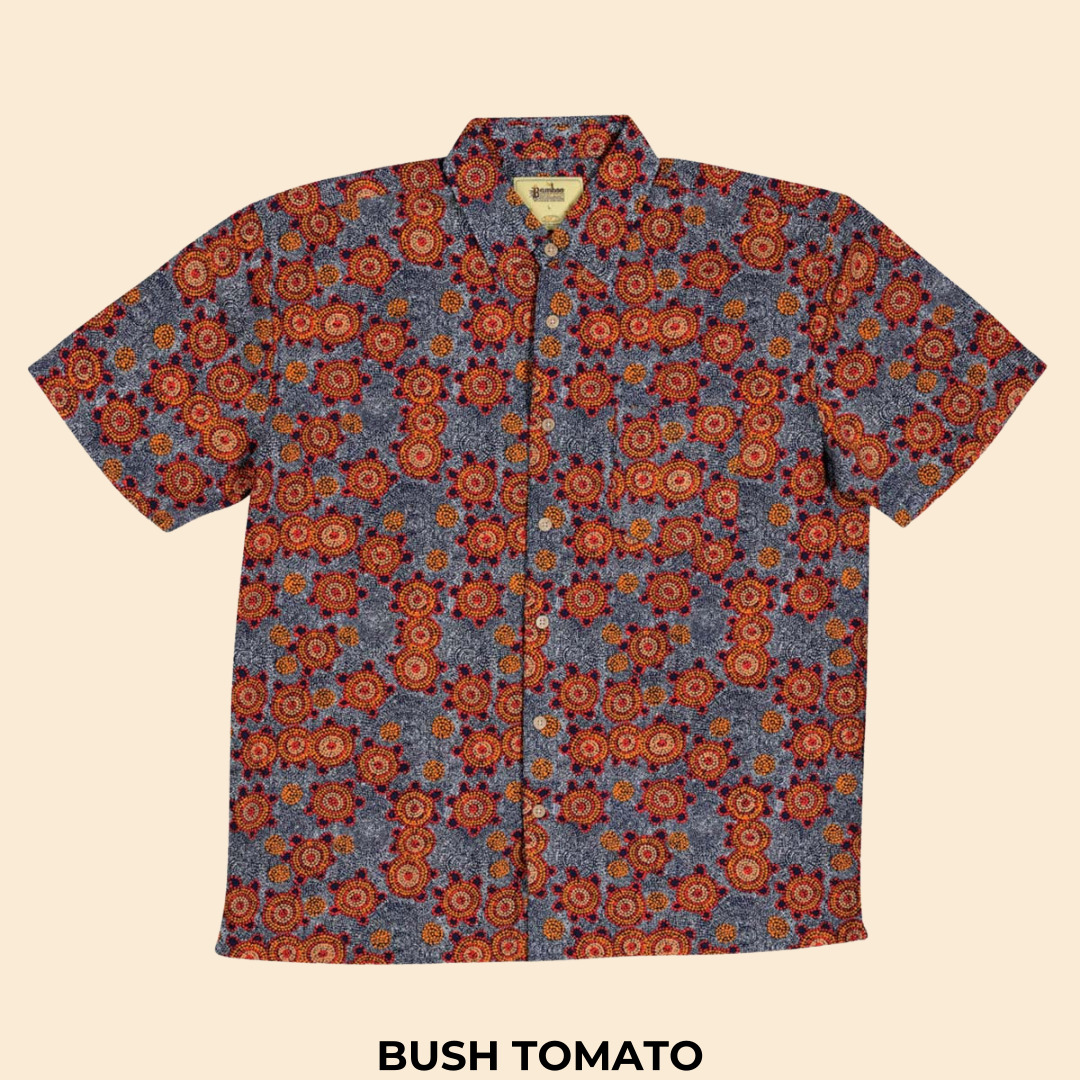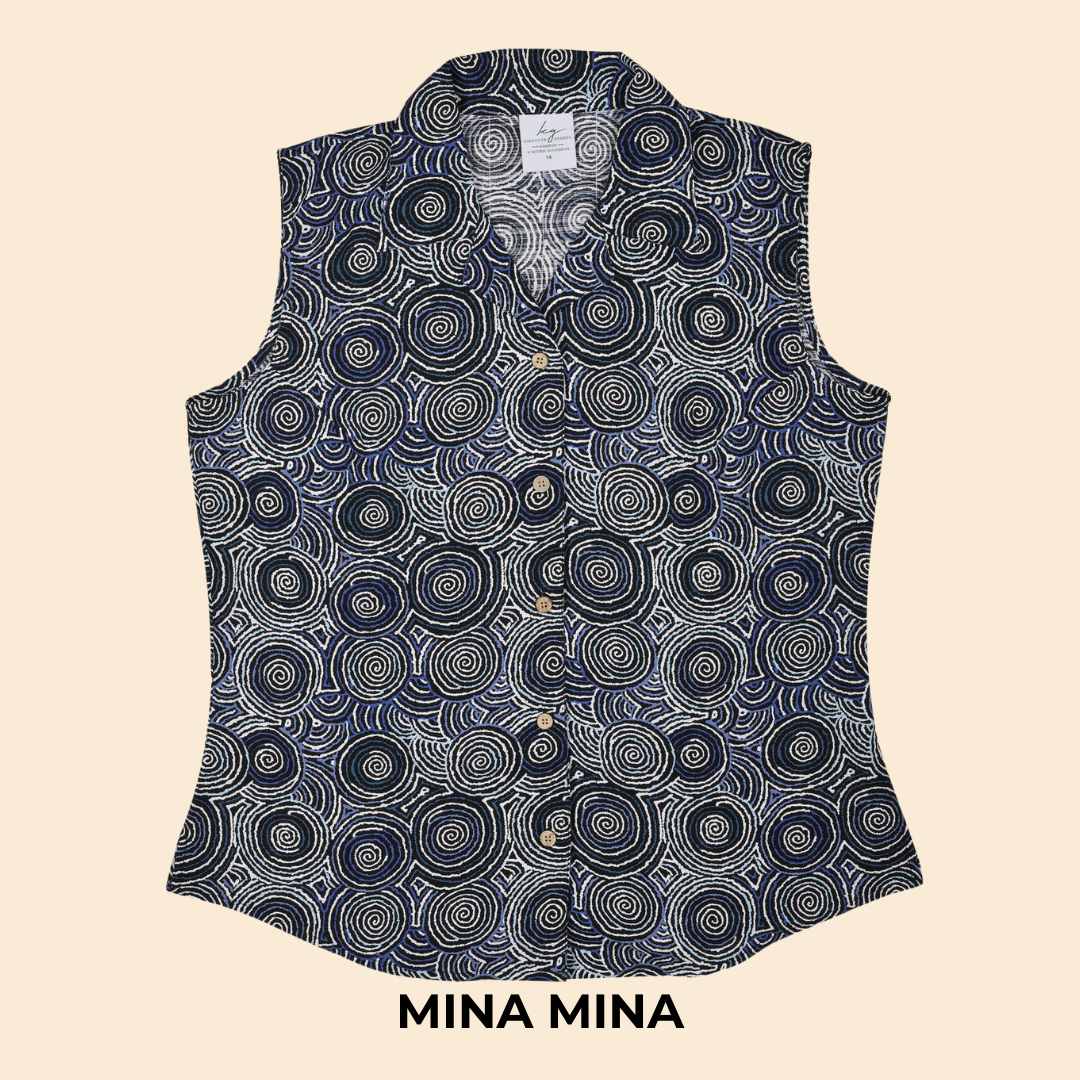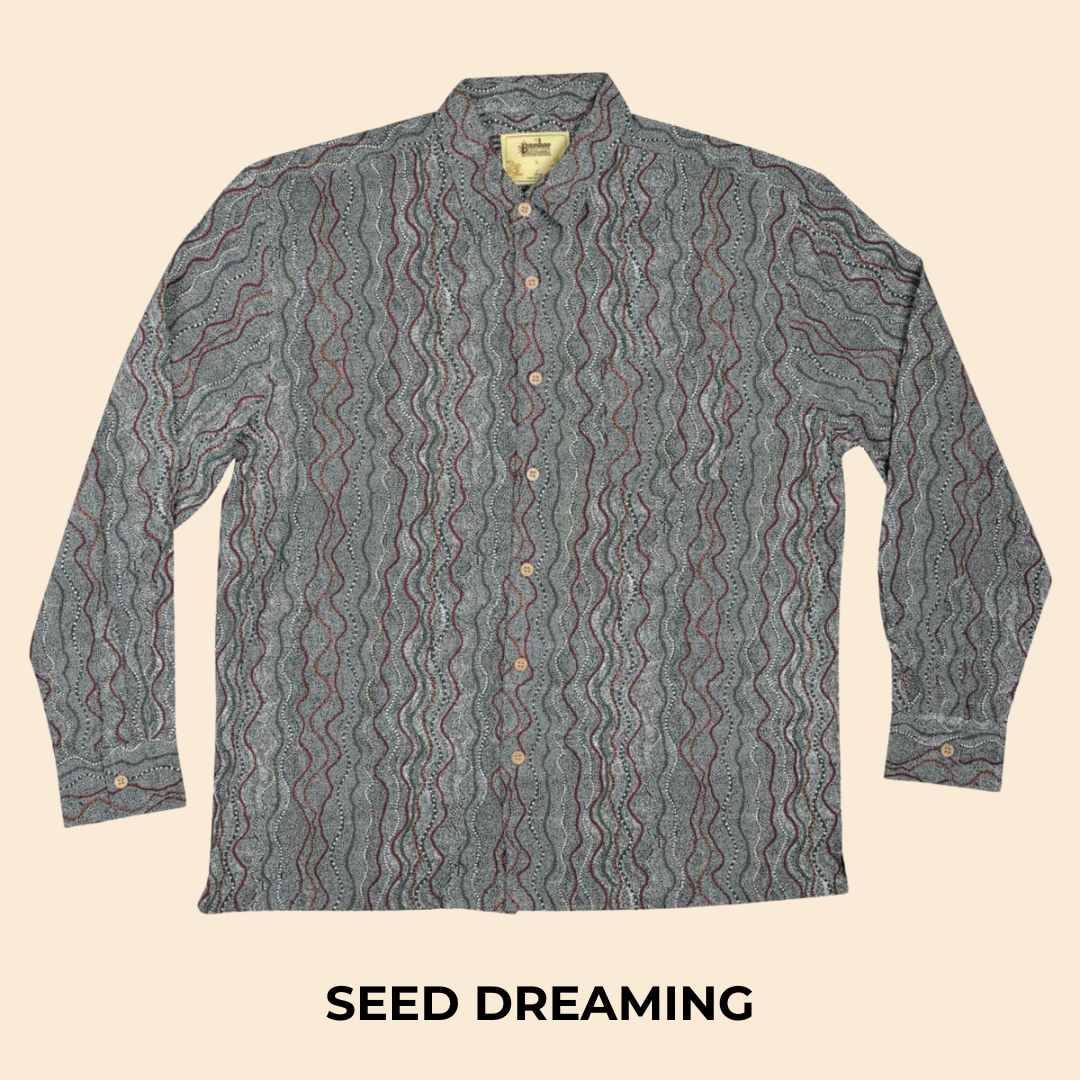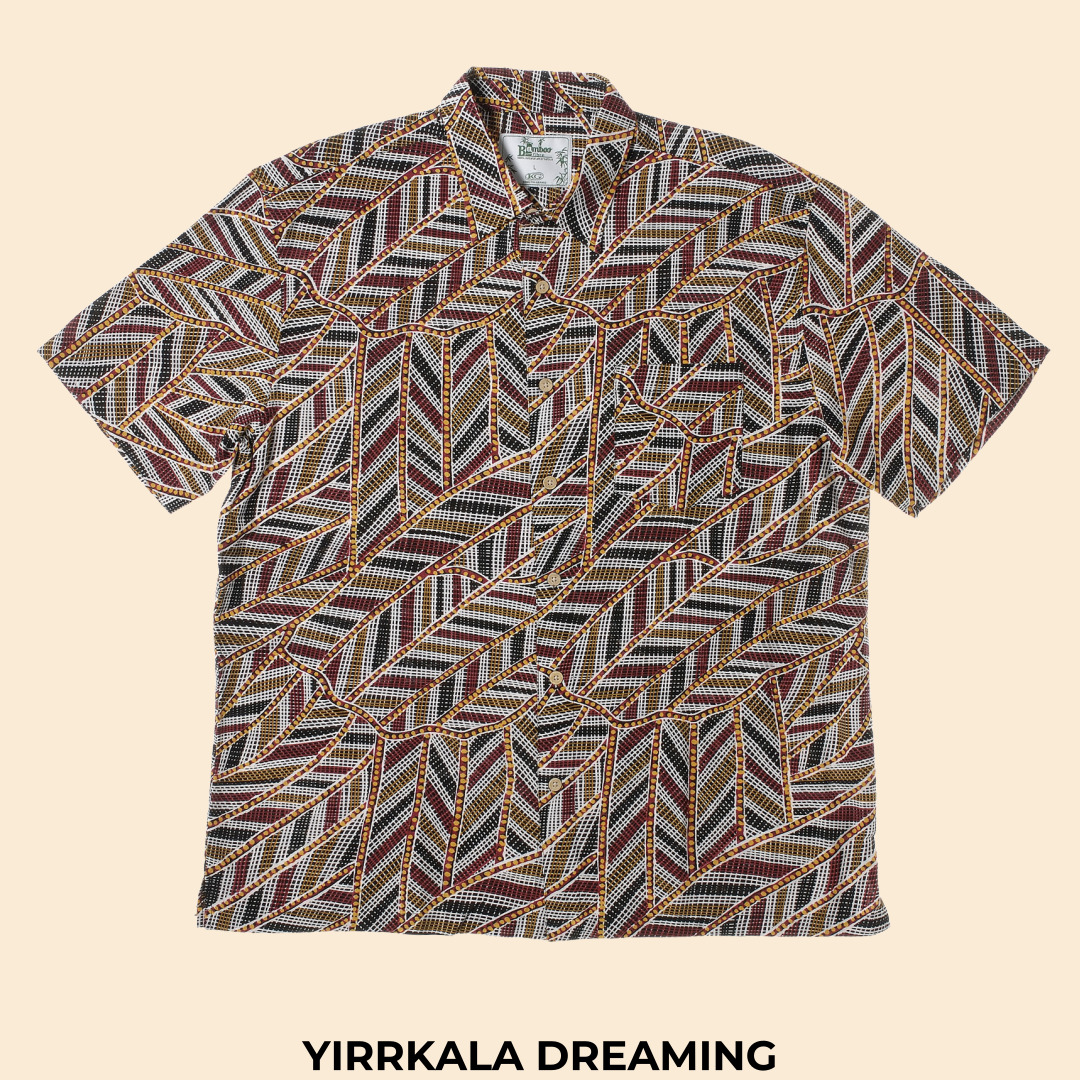Bamboo Dreaming Range
Made In Hemp is thilled to offer this fantastic range of bamboo clothing, made by our friends at Kingston Grange in partnership with the Warlukurlangu Artists Aboriginal Corporation.
Warlukurlangu Artists Aboriginal Corporation (Warlukurlangu) is an Indigenous organisation that creates, promotes and preserves Aboriginal heritage and culture of Warlpiri people. It is a major source of employment for the artists in the region and works towards empowering their social and economic wellbeing through the production, marketing and distribution of their visual arts and crafts.The organisation provides sustainable and culturally appropriate employment opportunities to alleviate disadvantages and poverty in surrounding communities. It conducts professional development workshops which provides artist with an opportunity to learn new skills and techniques and experiment with different media.
For more information on this fantastic corporation, please check out their website - https://warlu.com/
Copyright of all artworks and text remains with the artists and Aboriginal traditional owners and is administered on their behalf by Warlukurlangu Artists Aboriginal Corporation
These are their stories -
Janganpa Jukurrpa (Brush-tail Possum Dreaming)- Mawurrji
Janganpa Jukurrpa (common brush-tail possum [Trichosurus vulpecula] Dreaming) travels all over Warlpiri country. ‘Janganpa’ are nocturnal animals that often nest in the hollows of white gum trees (‘wapunungka’). This story comes from a big hill called Mawurrji, west of Yuendumu and north of Pikilyi (Vaughan Springs). A group of ‘janganpa’ ancestors resided there. Every night they would go out in search of food. Their hunting trips took them to Wirlki and Wanapirdi, where they found ‘pamapardu’ (flying ants). They journeyed on to Ngarlkirdipini looking for water. A Nampijinpa women was living at Mawurrji with her two daughters. She gave her daughters in marriage to a Jupurrurla ‘janganpa’ but later decided to run away with them. The Jupurrurla angrily pursued the woman. He tracked them to Mawurrji where he killed them with a stone axe. Their bodies are now rocks at this place. Warlpiri people perform a young men’s initiation ceremony, which involves the Janganpa Jukurrpa. The Janganpa Jukurrpa belongs to Jakamarra/Jupurrurla men and Nakamarra/Napurrurla women. In Warlpiri paintings traditional iconography is used to represent this Jukurrpa. ‘Janganpa’ tracks are often represented as ‘E’ shaped figures and concentric circles are used to depict the trees in which the ‘janganpa’ live, and also the sites at Mawurrji.
Artist: Glen Jampijinpa Martin
Wanakiji Jukurrpa (Bush Tomato Dreaming)
The Wanakiji Jukurrpa (bush tomato [Solanum chippendalei] Dreaming) travels through Yaturlu (near Mount Theo, north of Yuendumu). “Wanakiji” grows in open spinifex country and is a small, prickly plant with purple flowers that bears green fleshy fruit with many small black seeds. After collecting the fruit the seeds are removed with a small wooden spoon called ‘kajalarra’. The fruit then can be eaten raw or threaded onto skewers called ‘turlturrpa’ and then cooked over a fire. ‘Wanakiji’ can also be skewered and left to dry. When they are prepared in this way it is called ‘turlturrpa’ and the fruit can be kept for a long time. In contemporary Warlpiri paintings traditional iconography is used to represent the Jukurrpa, particular sites and other elements. The Wanakiji Jukurrpa belongs to Napanangka/Napangardi women and Japanangka/Japangardi men.
Artist: Juliette Nakamarra Morris
Mina Mina Jukurrpa (Mina Mina Dreaming) – Ngalyipi
This ‘Jukurrpa” (Dreaming) comes from Mina Mina, a very important women’s Dreaming site far to the west of Yuendumu near Lake Mackay and the WA boarder. The ‘kirda’ (owners) of this Dreaming are Napangardi/Napanangka women and Japangardi/Japanangka men; the are is sacred to Napangardi and Napanangka women. There are a number of ‘mulju’ (water soakages) and a ‘maluri’ (clay pan) at Mina Mina.
In the Dreamtime, ancestral women danced at Mina Mina and ‘karlangu’ (digging sticks) rose up out of the ground. The women collected the digging sticks and then travelled on the east, dancing, digging for bush tucker, collecting ‘ngalyipi’ (snake vine [ Tinospora smilacina]), and creating many places as they went. ‘Ngalyipi’ is a rope like creeper that grows up the trunks and limbs of trees, including ‘kurrkara’ (desert oak [Allocasuarina decaisneana])/ It is used as a ceremonial wrap and as a strap to carry ‘parraja’ (coolamons) and ‘ngam’ (water carriers). ‘Ngalyipi’ is also used to tie around the forehead to cure headaches, and to blind cuts.
The women stopped at Karntakurlangu, Janyinki, Parapurnta, Kimayi, and Munyuparntiparnti, sites spanning from the west to the east of Yundumu. When they stopped, the women dug for bush foods like ‘jintiparnts’ (desert truffle [Elderia arenivaga]). The Dreaming track eventually took them far beyond Warlpiri country. The track passed through Coniston in Anmatyerre country to the east, and then went on to Alcoota and Aileron far to the northeast of Yuendumu and eventually on into Queensland.
In Warlpiri paintings, traditional iconography is used to represent the Jukurrpa, sinuous lines are used to represent the ‘ngalyipi’ (snake vine). Concentric circles are often used to represent the ‘jintiparnta’ (desert truffles) that the women have collected, while straight lines can be used to depict the ‘karlangu’ (digging sticks).
Artist: Kristy Anne Napanangka brown
Watiya-warnu Jukurrpa (Seed Dreaming)
This painting tells the story of a Jangala ‘watiya-warnu’ (Acacia tenuissima) ancestor who travelled south from a small hill called Ngurlupurranyangu to Yamunturrngu (Mount Liebig). As he travelled, he picked the ‘watiya-warnu’ seeds and placed them in ‘parrajas’ (food carriers), one of which he carried on his head. Watiya-warnu is a seed bearing tree that grows in open spinifex or mulga country. When people returned to their camp after collecting the seeds, they would make large windbreaks for shelter and winnow the seed in the late afternoon. Immature ‘watiya-warnu’ seed is ground into a paste and can be used to treat upset stomachs. The associated ‘watiya-warnu’ ceremony involves the preparation of a large ground painting. This Jukurrpa belongs to Nampijinpa/Nangala women and Jampijinpa/Jangala men. In contemporary Warlpiri paintings traditional iconography is used to represent the Jukurrpa, particular sites and other elements. In paintings of this Dreaming ‘U’ shapes are often depicting women collecting the ‘watiya-warnu’ seeds. Oval shapes represent the ‘parrajas’ where they carry the seeds and strait lines beside them frequently portrait digging sticks.
Artist Marshall Jangala Robertson
Yirrkala Dreaming (East Arnhem Land)
Ben has painted a story deriving from his mother’s Jukurrpa, Dreaming in reference to the Duhwa Clan from Yirrkala, East Arnhem Land.
“Everything in the Yolnu world view is made up of two moieties. One is Yirritja and the other one is Dhuwa.
Dhuwa and Yirrita make up our world view. They are two halves of our holistic world view. Yirritja and Dhuwa fit together perfectly.
Everything in Yirritja and Dhuwa is connected. Yirritja and Dhuwa people intermarry and everything in the land is either Yirritja or Dhuwa”.
Artist: Ben Jungarrayi Vincent. (Skin name Gungorogone)
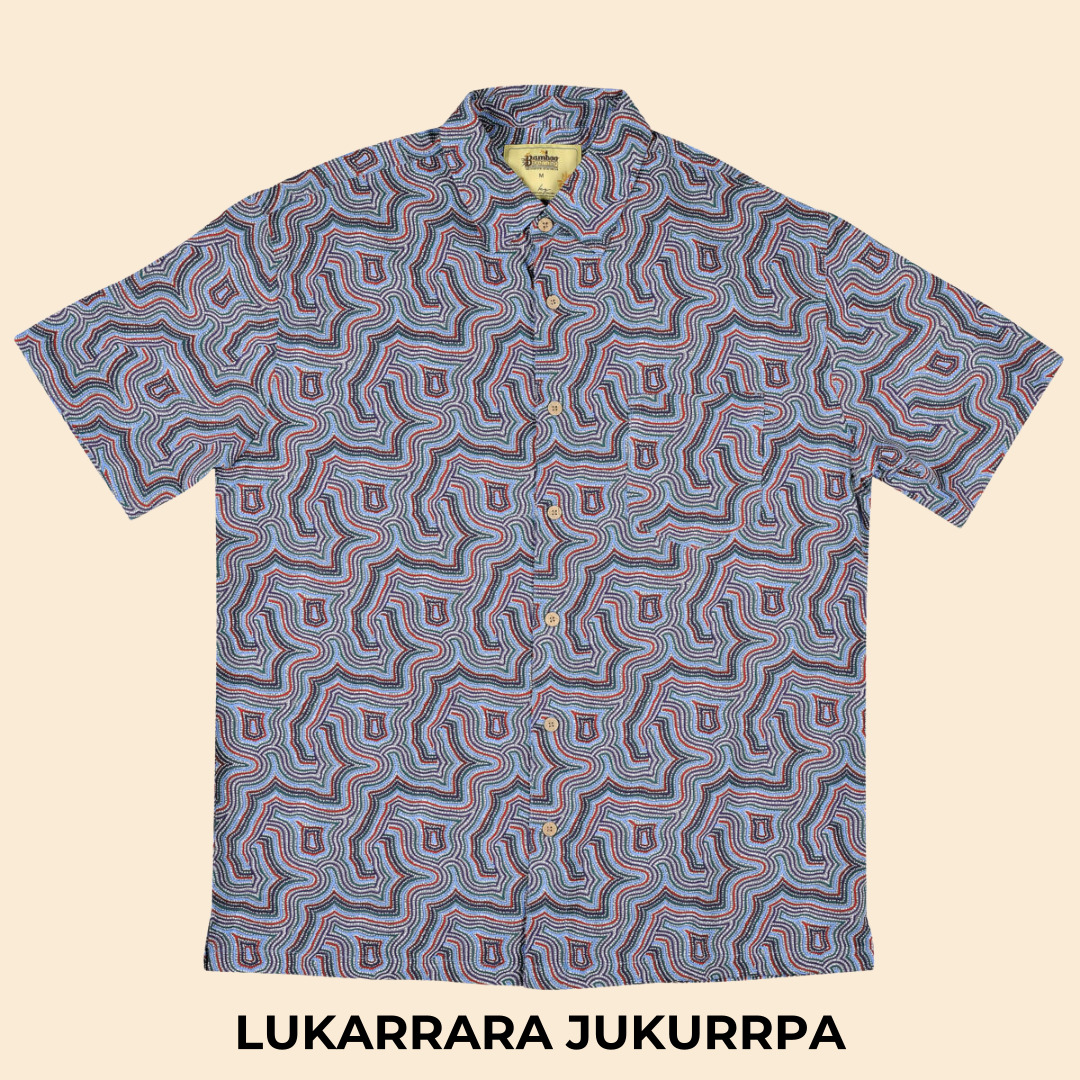
Lukarrara Jukurrpa (Desert Fringe-rush Seed Dreaming)
This Jukurrpa belongs to women of the Nakamarra/Napurrurla subsections and to Jakamarra/Jupurrurla men. This Dreaming is associated with a place called Jaralypari, north of Yuendumu. Lukarrara (desert fringe-rush [Fimbristylis oxystachya & Fimbristylis eremophila]) is a grass with an edible seed. The seeds are traditonally ground on a large stone (‘ngatinyanu’) with a smaller stone (‘ngalikirri’) to make flour. This flour is mixed with water (‘ngapa’) to make damper cakes which are cooked and eaten. In Warlpiri traditional paintings iconography is used to represent the Jukurrpa, particular sites and other elements. Large concentric circles often represent the site of Jaralypari and also the seed bearing grass Lukurrara. ‘U’ shapes can depict the Karnta (women) collecting ‘lukarrara’ and straight lines are frequently used to portray seeds that fall down to the ground and are also collected by women using their ‘parrajas’ (wooden food carriers) and ‘karlangu’ (digging sticks).
ARTIST: LORRAINE NAPANGARDI WHEELER
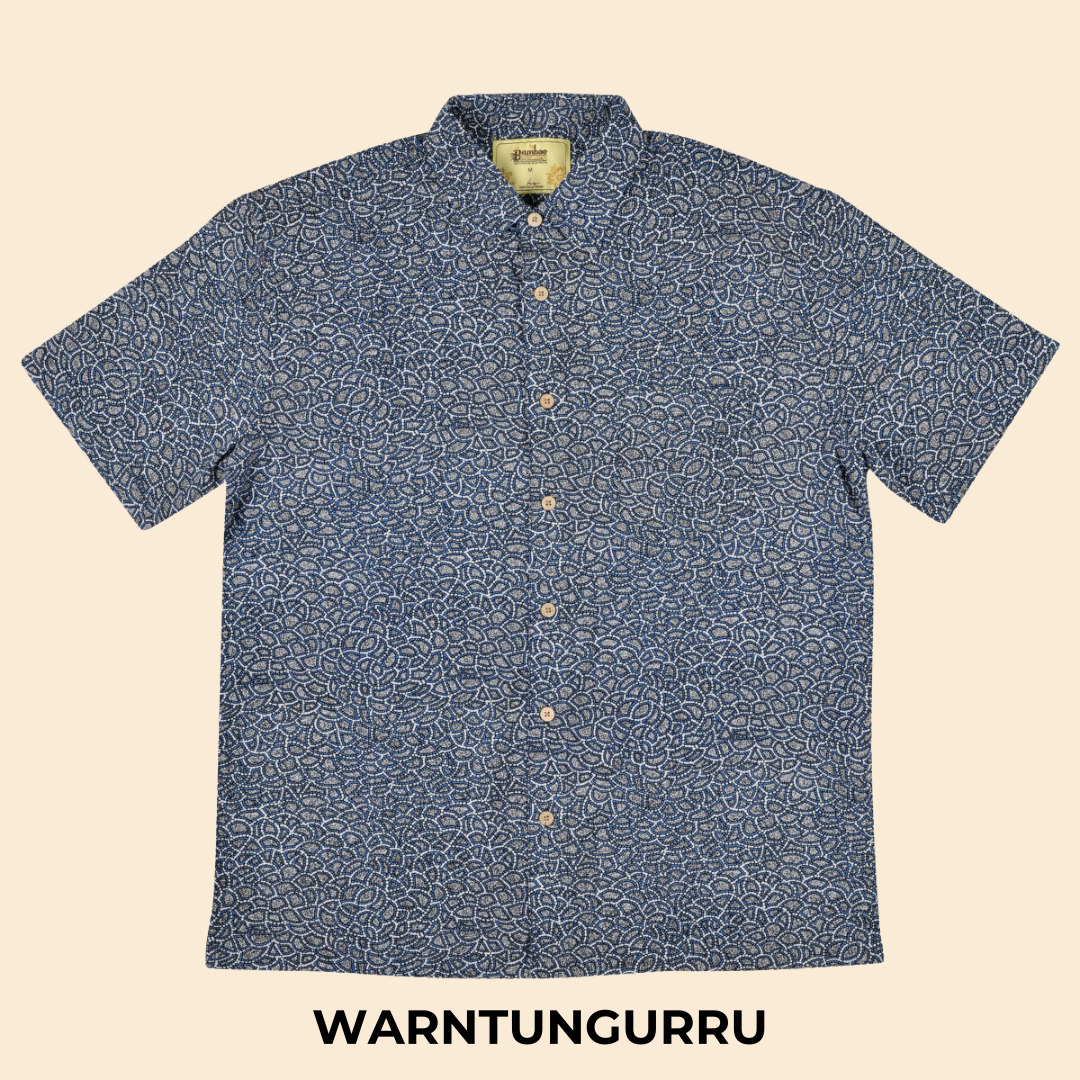
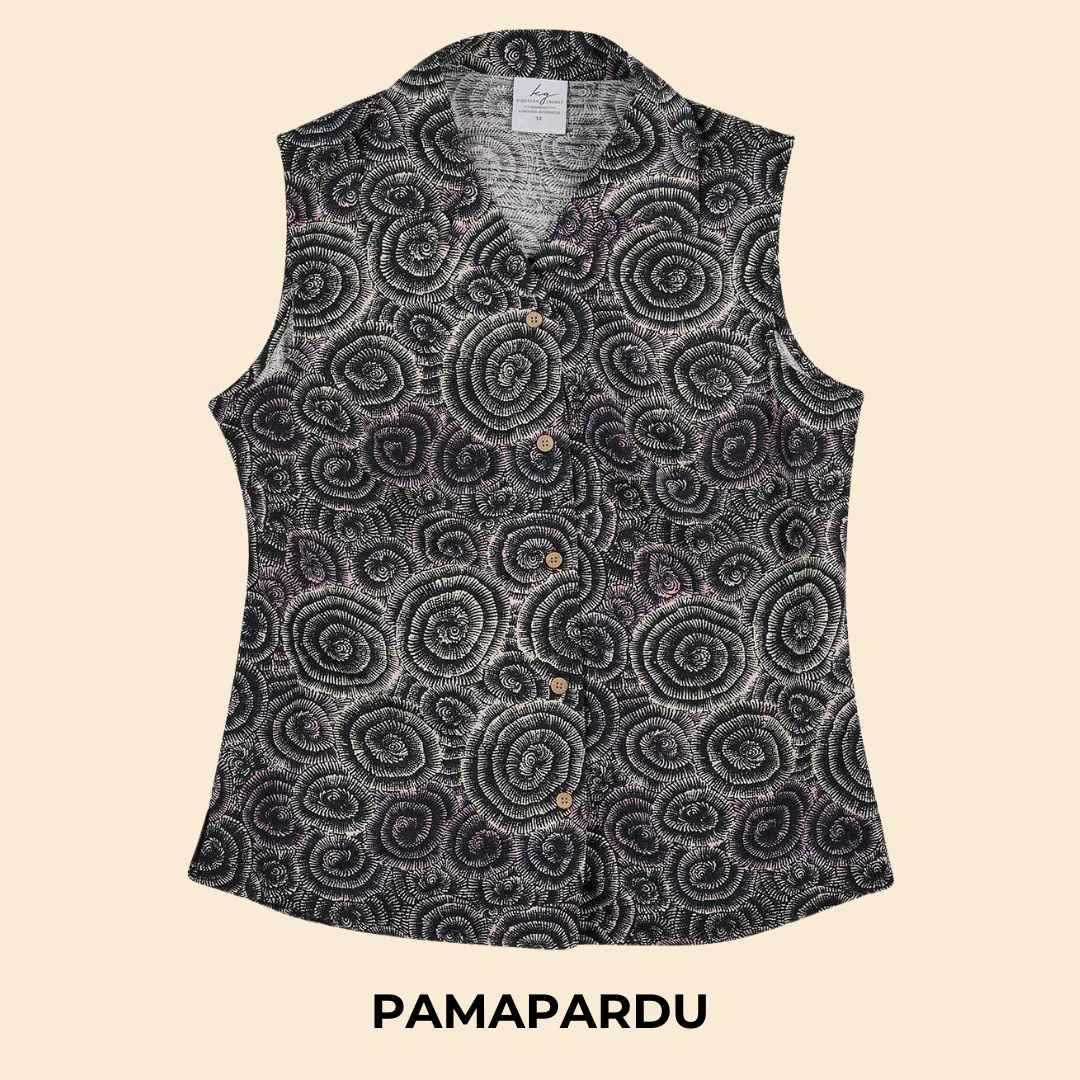
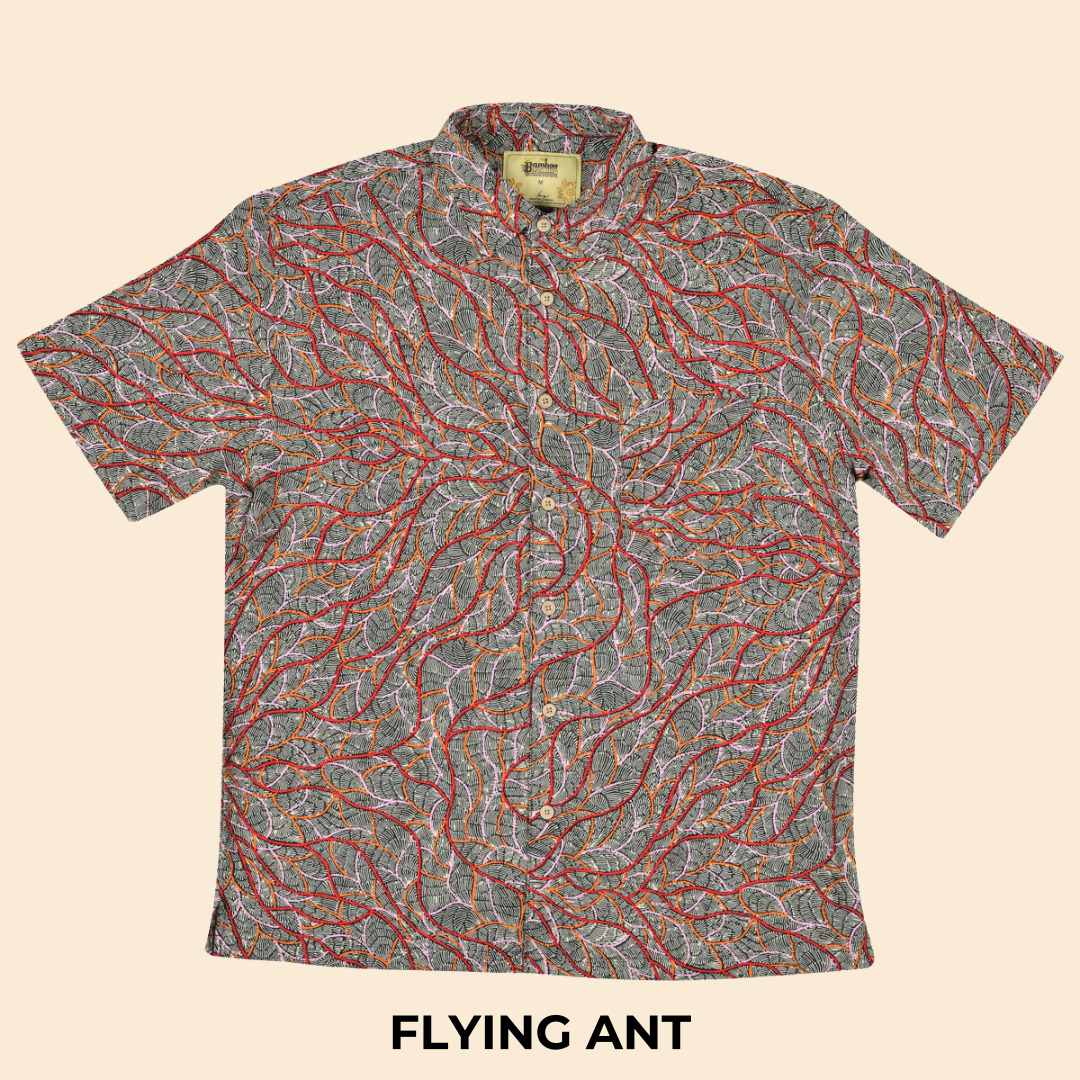
Pamapardu Jukurrpa (Flying Ant Dreaming) – Warntungurru
This paintng depicts the Pamapardu Jukurrpa (Flying Ant Dreaming) from Warntungurru, west of Yuendumu. ‘Pamapardu’ is the Warlpiri name for the flying ants or termites that build the large anthills found throughout Warlpiri country. This country belongs to Nakamarra/Napurrurla women and Jakamarra/Jupurrurla men. ‘Pamapardu’ are flying ants. They build earth mounds (‘mingkirri’) that are common in the Tanami area. When heavy rains come in summer the ‘mingkirri’ get flooded out, so the ‘pamapardu’ grow wings and fly off to make new homes, following their queens to dry mounds or to build a new. When they have found their new home they drop their wings. In this stage they can be collected, lightly cooked in coals and eaten. As they fall to the ground women collect them to eat because they are nice and sweet. In contemporary Warlpiri paintngs traditonal iconography is used to represent the Jukurrpa, partcular sites and other elements. When this Jukurrpa story is painted concentric circles are used to represent the ‘mingkirri’ and the rockholes involved in the story, including the central one at Wapurtali (Mt Singleton). Dashes are often depicted around the circles to represent the ‘pamapardu’.
ARTIST: SERITA NAKAMARRA ROSS

Ngapa Jukurrpa (Water Dreaming) – Pirlinyarnu
The site depicted in this painting is Pirlinyarnu (Mt. Farewell), about 165 km west of Yuendumu in the Northern Territory. The ‘kirda’ (owners) for the water Dreaming site at Pirlinyarnu are Nangala/Nampijinpa women and Jangala/Jampijinpa men. Two Jangala men, rainmakers, sang the rain, unleashing a giant storm that collided with another storm from Wapurtali at Mirawarri. A ‘kirrkarlanji’ (brown falcon [Falco berigora]) carried the storm further west from Mirawarri. The two storms travelled across the country from Karlipirnpa, a ceremonial site for the water Dreaming near Kintore that is owned by members of the Napaljarri/Japaljarri and Napanangka/Japanangka subsections. Along the way the storms passed through Junparnta, a site that is owned by Jampijinpa men. The storm eventually became too heavy for the falcon. It dropped the water at Pirlinyarnu, where it formed an enormous ‘maluri’ (claypan). A ‘mulju’ (soakage) exists in this place today. Whenever it rains today, hundreds of ‘ngapangarlpa’ (bush ducks) still flock to Pirlinyarnu.
In contemporary Warlpiri paintings, traditional iconography is used to represent the ‘Jukurrpa’ (Dreaming), associated sites, and other elements. In many paintings of this Dreaming, short dashes are often used to represent ‘mangkurdu’ (cumulus & stratocumulus clouds), and longer, flowing lines represent ‘ngawarra’ (flood waters). Small circles are used to depict ‘mulju’ (soakages) and river beds.
ARTIST: LEAH NAMPIJINPA SAMPSON
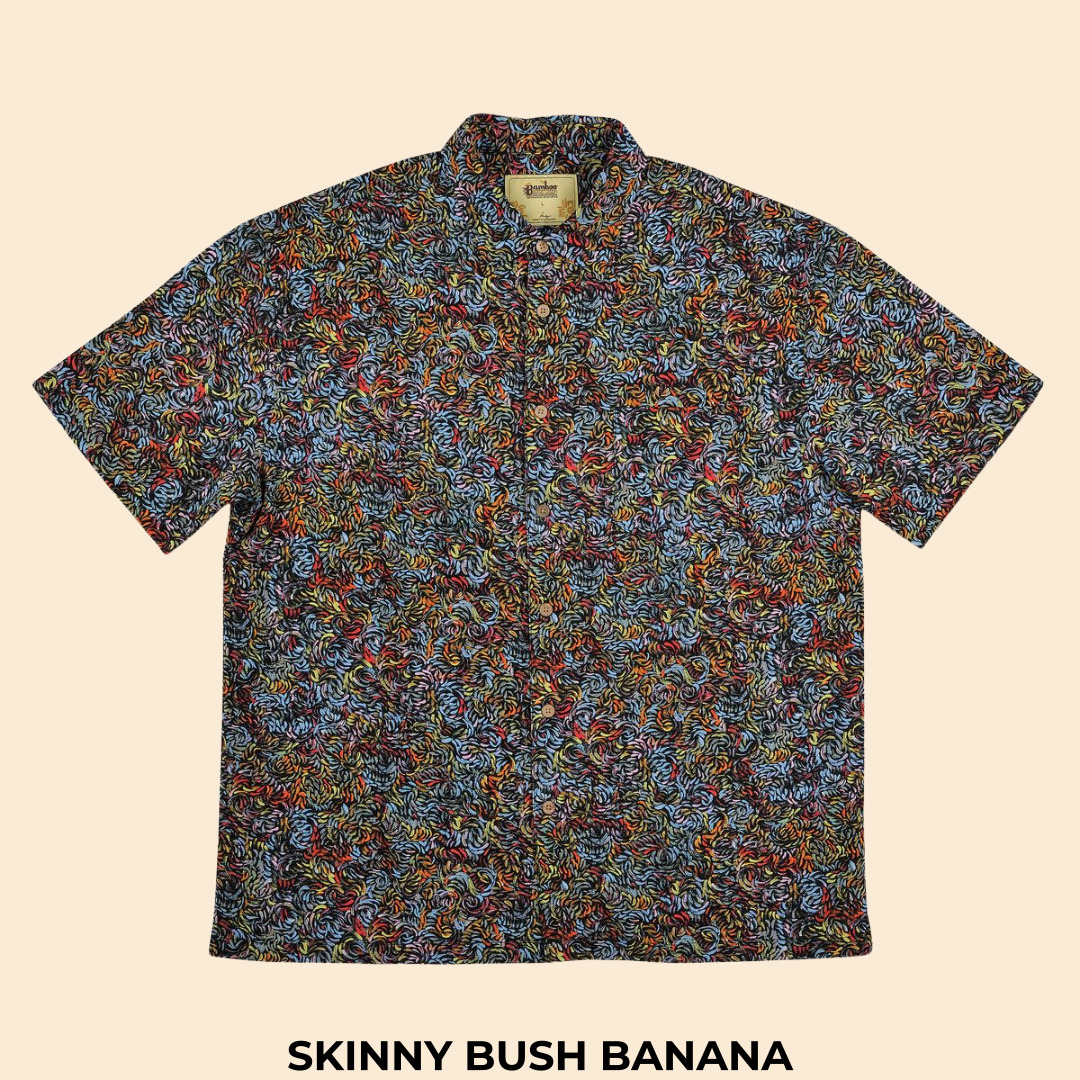
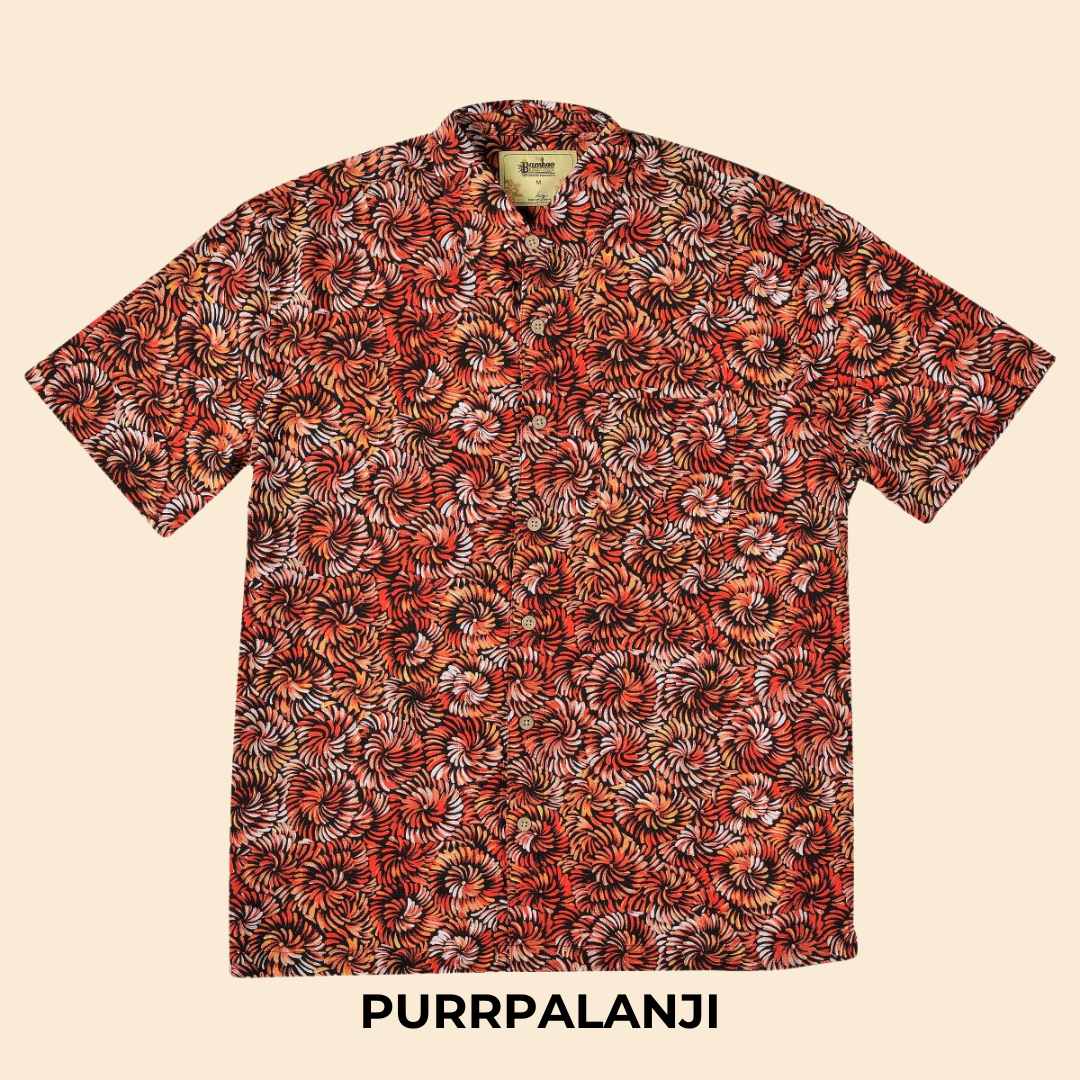
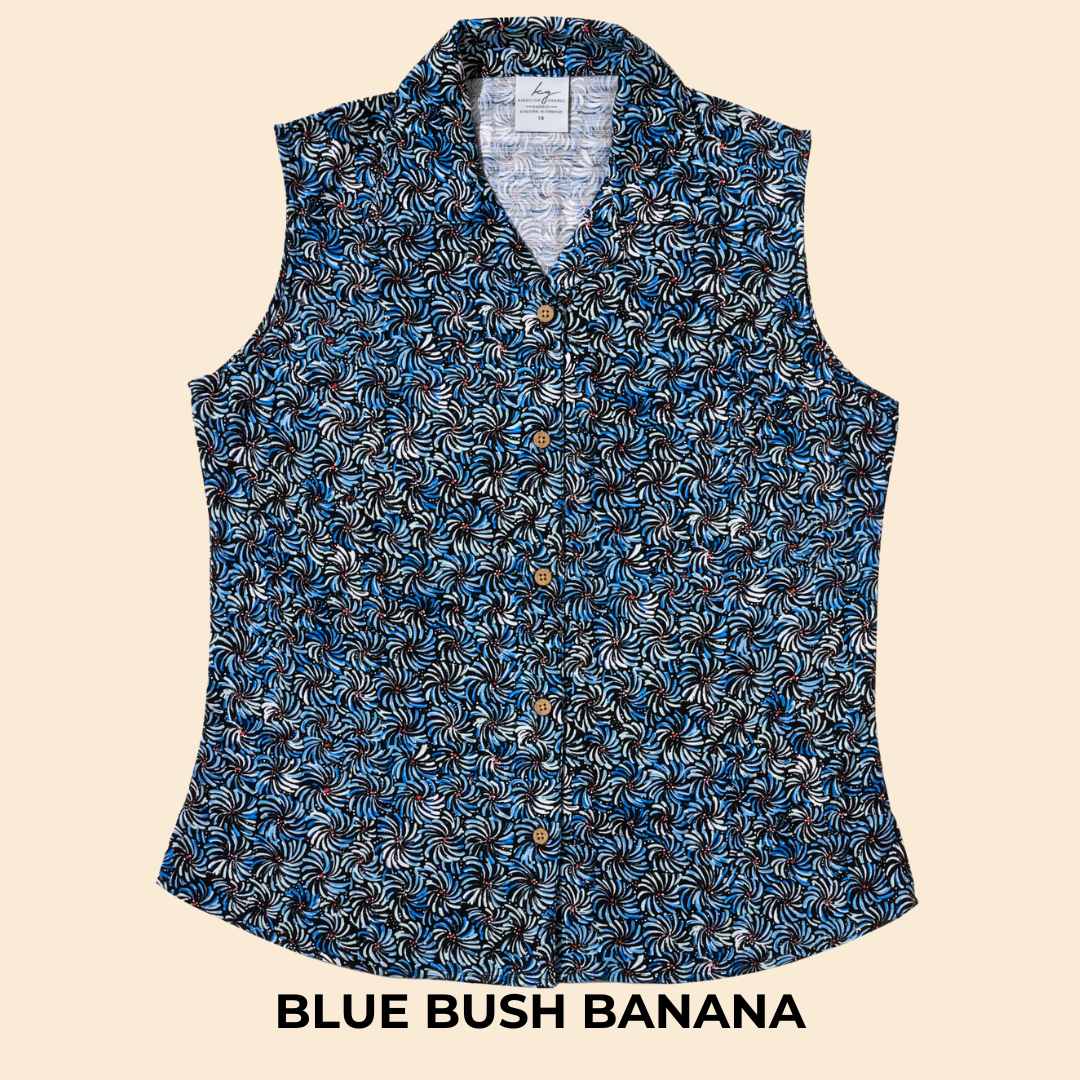
Purrpalanji (Skinny Bush Banana) Jukurrpa
‘Purrpalanji’ (skinny bush banana [Rhyncharrhena linearis]) is a twining climber with thin leaves and pink-brown flowers. Its bean-like edible pods are long and skinny, and can grow up to 20 cm long. It is fire tolerant and grows quickly whenever moisture is available. Like ‘yuparli’ (bush banana [Marsdenia australis]), all of the plant is eaten aside from the woody stems. This ‘purrpalanji Jukurrpa’ (skinny bush banana Dreaming) comes from Pikilyi (Vaughan Springs), a large waterhole and natural spring to the west of Yuendumu, close to Mount Doreen. Napangardi/Napanangka women and Japangardi/Japanangka men are the ‘kirda’ (owners) of the skinny bush banana Dreaming at Pikilyi. Nangala women and Jangala men are the ‘kurdungurlu’ (custodians) of this Dreaming. Napangardi and Napanangka women collect ‘purrpalanji’ (skinny bush banana) and ‘yuparli’ (bush banana) around Pikilyi in their ‘parraja’ (coolamons). They cook the ‘purrpalanji’ and ‘yuparli’ in hot ashes to get rid of the acidic taste they can have when eaten raw. The skinny bush banana Dreaming is only associated with Pikilyi, and does not travel to other locations.
Pikilyi is an important site associated with a number of different Dreamings. These include ‘yuparli Jukurrpa’ (bush banana Dreaming), ‘warrilyi ngurlu Jukurrpa’ (blue mallee [Eucalyptus polybractea] seed Dreaming), ‘kakalyalya Jukurrpa’ (cockatoo Dreaming), and ‘warna-jarra Jukurrpa’ (two snakes Dreaming). In the two snakes Dreaming story, Napangardi and Napanangka women picked lice off of the two snakes living in the waterhole at Pikilyi.
In Warlpiri paintings, traditional iconography is used to represent the Jukurrpa and other elements. Curved lines are used to represent the long, skinny edible portion of the ‘purrpalanji’ (skinny bush banana).
ARTIST: NOLA NAPANGARDI FISHER

Marlu Jukurrpa (Red Kangaroo Dreaming) Yarnardilyi & Jurnti
This painting depicts the Marlu Jukurrpa (red kangaroo [Macropus rufus] Dreaming) from Yarnardilyi and Jurnti (Mt Dennison area). ‘Marlu’ are highly valued as a food source by Warlpiri people. In the story of this painting an old ancestral kangaroo named Warlawee, who made its camp at Jurnti and moves from place to place – hunting during the day and returning at night to the camp, which it has formed by digging depressions in the soft ground. Warlawee traveled around large areas of country looking for their preferred foods, which include ‘yukuri’ (fresh green growth) and ‘yulkardi’ (desert cucumber [Mukia micrantha]) a low-growing herb found underneath ‘mulga’ trees which is used by Warlpiri people for medicinal purposes. He is thinking about having a ceremony for men. Women are not permitted to dance in this ceremony.
This Jukurrpa is the custodial responsibility of Japaljarri/Jungarrayi men and Napaljarri/Nungarrayi women. In contemporary Warlpiri paintings traditional iconography is used to represent the Jukurrpa, particular sites and other elements. Concentric circles are often used in depictions of this story to represent the rocks at Yarnardilyi. The arc shapes depict the kangaroo’s camp in the Jurnti area and ‘E’ and hooked shapes usually depict the ‘marlu wirliya’ (kangaroo fore and hind footprints) while long, straight lines represent the ‘marlu ngirnti’ (kangaroo tail tracks).
ARTIST: SHARLENE NAKAMARRA NELSON
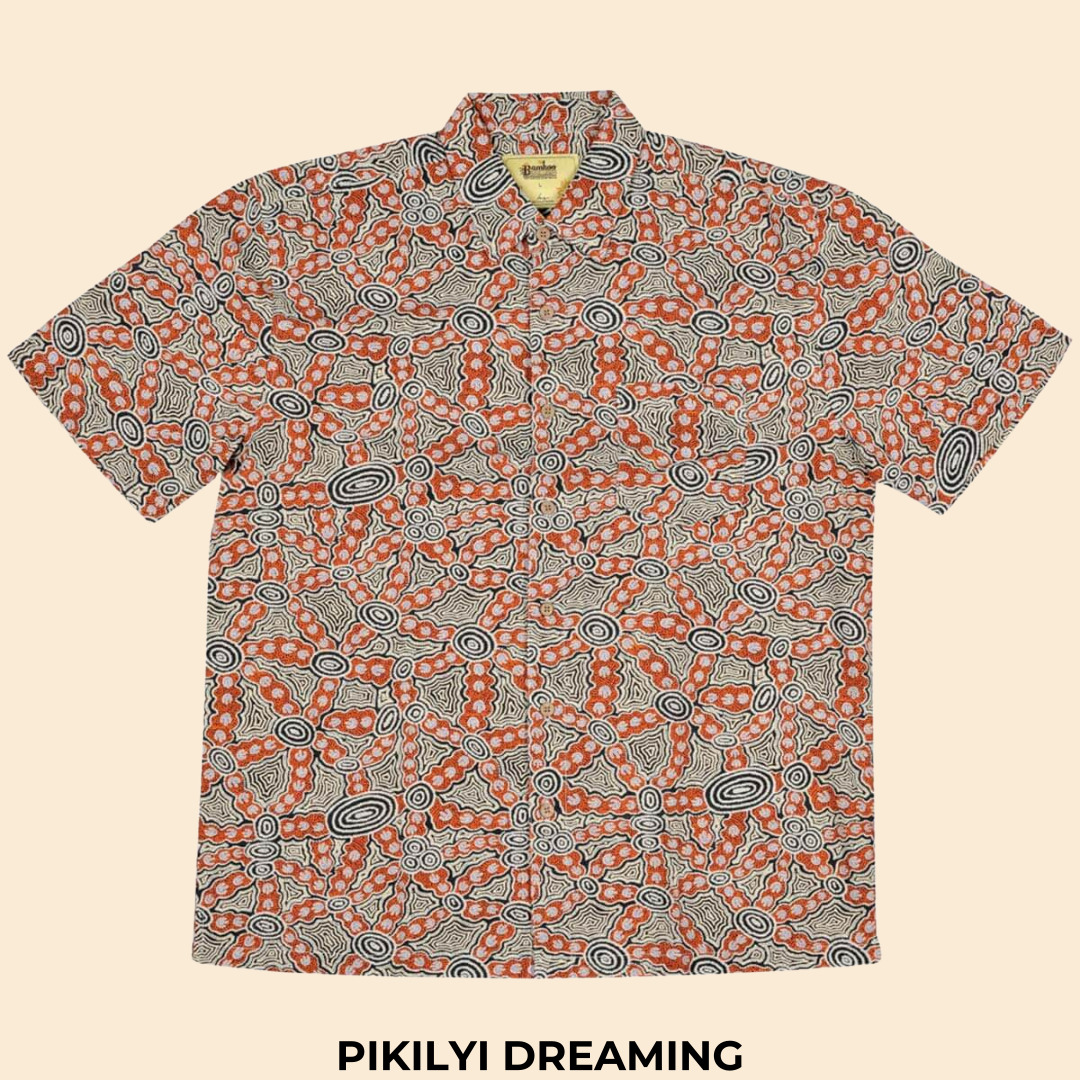
Pikilyi Jukurrpa (Vaughan Springs Dreaming)
Pikilyi is a large and important waterhole and natural spring near Mount Doreen station. Pikilyi Jukurrpa (Vaughan Springs Dreaming) tells of the home of two rainbow serpents, ancestral heroes who lived together as man and wife. The woman ‘rainbow serpent’ was of the Napanangka skin group, the man was a Japangardi. This was a taboo relationship contrary to Warlpiri religious law. Women of the Napanangka and Napangardi subsection sat by the two serpents, picking lice off them. For this service, the two serpents allowed the women to take water from the springs at Pikilyi. This was because the serpents were the ‘kirda’, or ceremonial owners, for that country. The spirits of these two rainbow serpents are still at Pikilyi today. This Dreamings belongs to the women and men of the Japanangka/Napanangka and Japangardi/Napangardi skin groups.
ARTIST: URSULA NAPANGARDI HUDSON
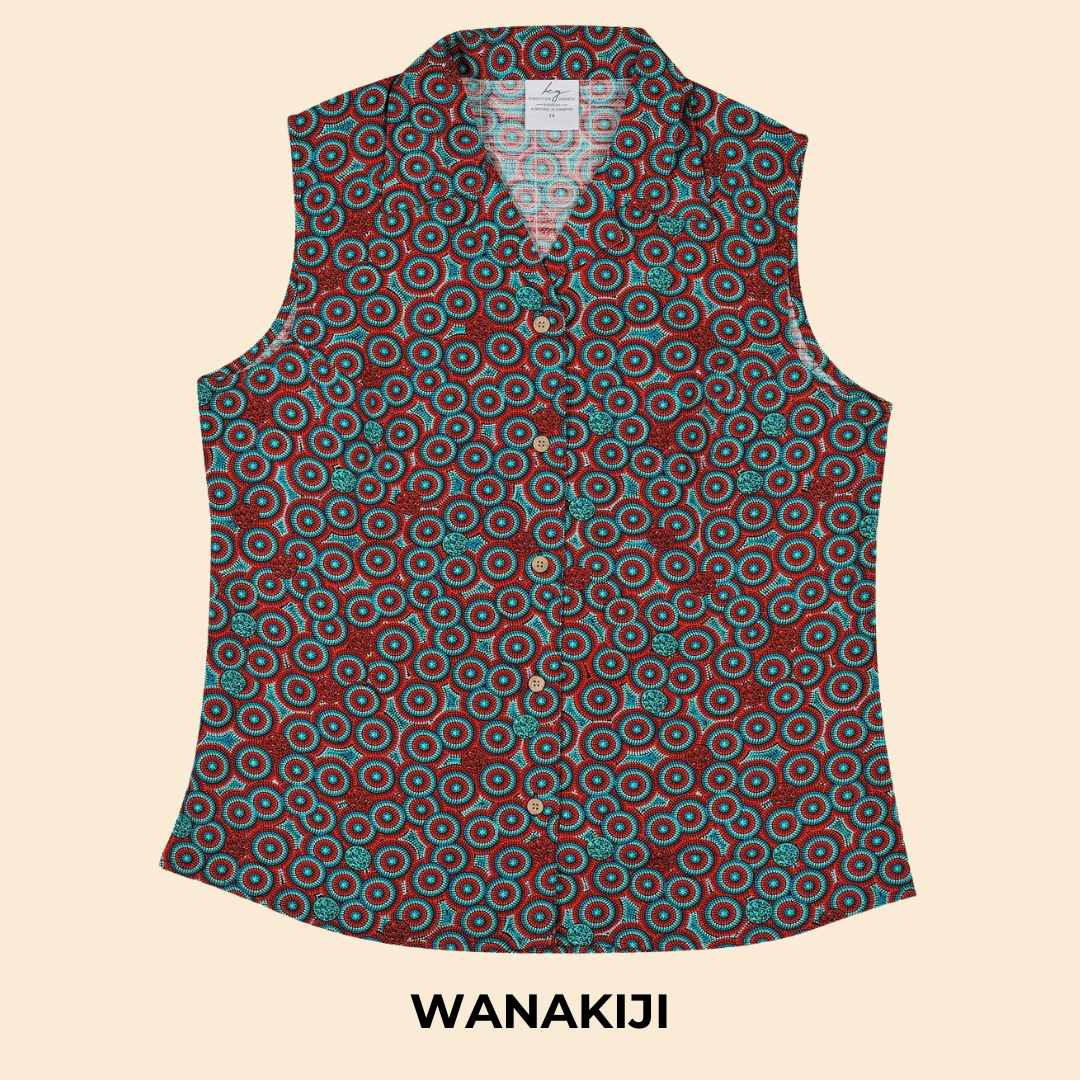
Wanakiji Jukurrpa
The Wanakiji Jukurrpa (bush tomato [Solanum chippendalei] Dreaming) travels through Yaturlu (near Mount Theo, north of Yuendumu). “Wanakiji” grows in open spinifex country and is a small, prickly plant with purple flowers that bears green fleshy fruit with many small black seeds. After collecting the fruit the seeds are removed with a small wooden spoon called ‘kajalarra’. The fruit then can be eaten raw or threaded onto skewers called ‘turlturrpa’ and then cooked over a fire. ‘Wanakiji’ can also be skewered and left to dry. When they are prepared in this way it is called ‘turlturrpa’ and the fruit can be kept for a long time. In contemporary Warlpiri paintings traditional iconography is used to represent the Jukurrpa, particular sites and other elements. The Wanakiji Jukurrpa belongs to Napanangka/Napangardi women and Japanangka/Japangardi men.
ARTIST: JEZEBEL NAPANANGKA PRESLEY
.jpg)
Yankirri Jukurrpa (Emu Dreaming) – Ngarlikirlangu
This painting depicts a ‘yankirri Jukurrpa’ (emu [Dromaius novaehollandiae] Dreaming) from a place called Ngarlikurlangu, approximately 50kms north of Yuendumu. The ‘kirda’ (owners) of this Dreaming are Nangala/Nampijinpa women and Jangala/Jampijinpa men.
This Jukurrpa tells the story of a ‘yankirri’ (emu) and a ‘wardilyka’ (bush turkey [Ardeotis australis]). ‘Yankirri’ lived at a soakage to the west called Warnirripanu (or Walangkamirirri), while ‘wardilyka’ lived at a soakage to the east called Parirri. The emu and bush turkey used to go around the country picking ‘yakajirri’ (bush raisins [Solanum centrale]) and mashing them into ‘kapurdu’ (fruit balls) to save in their nests for later. However, they were jealous of each other; the emu thought that the bush turkey was picking the best and juiciest ‘yakajirri’, and was leaving him with only the sour ‘yakajirri’.
The emu went to the bush turkey’s nest to the east while the bush turkey was out hunting and smashed up the ‘kapurdu’ that the bush turkey had saved there. When the bush turkey returned, he found his smashed ‘yakajirri’ balls and realized that the emu had destroyed them. He went to the west to confront the emu and when he found him, they got into a big fight. The bush turkey eventually flew away to the north, leaving behind the smashed ‘yakajirri’ balls.
This practice of making ‘kapurdu’ (fruit balls) is a traditional Warlpiri method of storing ‘yakajirri’; in the old days, people used to dry the ‘yakajirri’, grind them up with a rock in a coolamon, mix them with water and form balls from them, and cover the ‘kapurdu’ with red ochre so they would keep.
Today at Ngarlikirlangu we can see round, red rocks which are the ‘kapurdu’ that the emu smashed up. There is also a dance for this ‘yankirri’ (emu) Jukurrpa that is performed during mens’ initiation ceremonies. A number of other Jukurrpa are also located at Ngarlikirlangu, including ‘wardilyka Jukurrpa’ (bush turkey Dreaming), ‘yardijiinypa Jukurrpa’ (meat ant Dreaming), and ‘pirntina Jukurrpa’ (woma or Ramsay’s python [Aspidites ramsayi] Dreaming). Lots of ‘yakajirri’ grow around the Ngarlikirlangu area today.
In contemporary Warlpiri paintings, traditional iconography can be used to represent the Jukurrpa, associated sites, and other elements. ‘Yankirri’ are usually represented by arrow-like shapes depicting their ‘wirliya’ (footprints) as they walk around.
ARTIST: SARAH-JANE NAMPIJINPA SINGLETON

